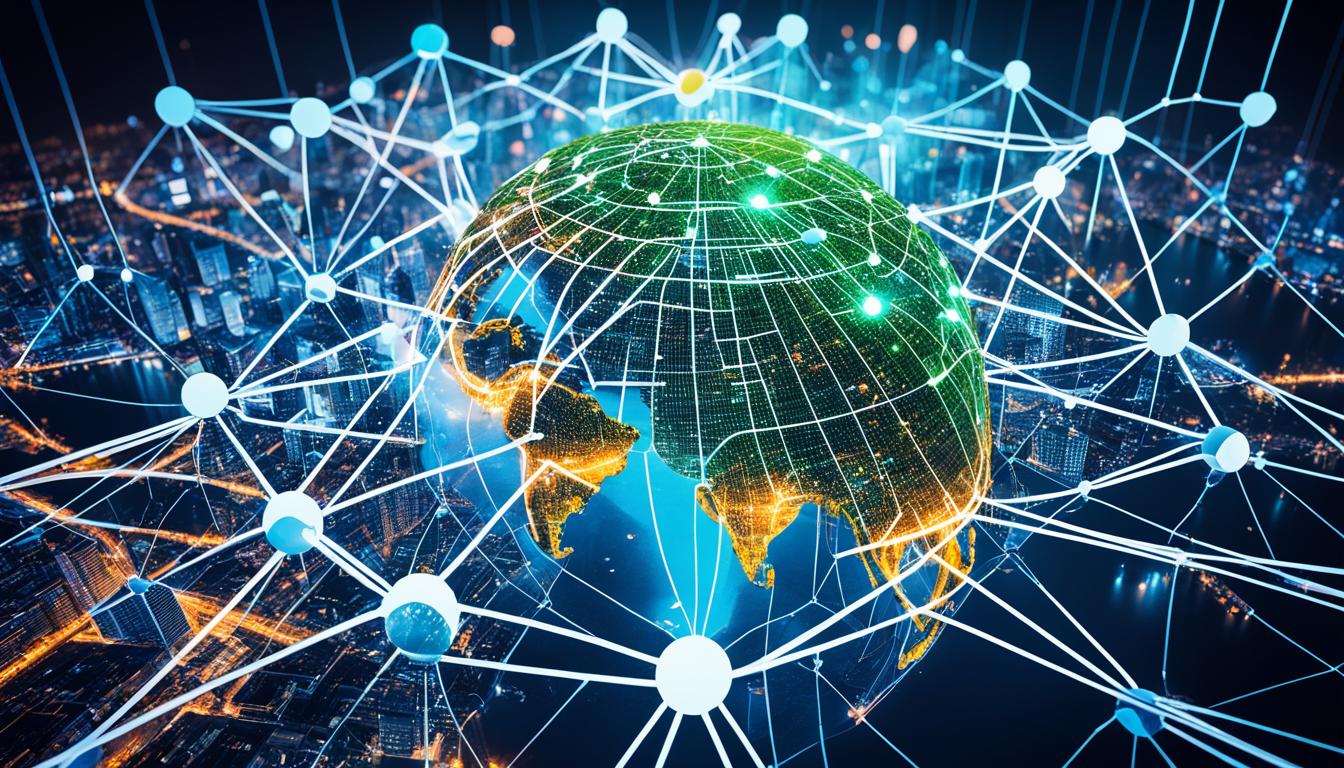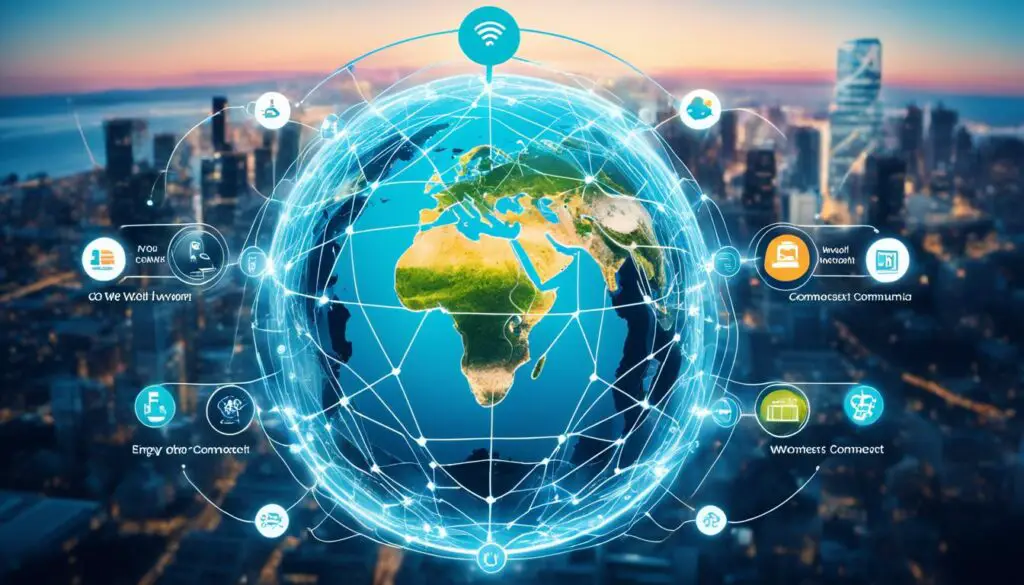
Artificial intelligence (AI) is changing the networking world by managing IT network complexity. As an AI journalist, I’m thrilled to see how AI is reshaping connections and communications. This includes AI networks, AI in networking, AI technologies, and AI strategies for IT networks.
AI uses machine learning (ML) and deep learning (DL) to analyze data, predict outcomes, and automate tasks. Natural language processing (NLP) enhances the power of AI in virtual and IT assistants. These make them smarter and more responsive. AI in networking needs lots of data, specific expertise, and the right tools.
AI-driven virtual network assistants offer insights and recommendations for wireless setups. They help by spotting anomalies, analyzing events, and predicting user needs. They can even make networks self-managing. This reduces problems, boosts performance, and lowers IT costs.
Key Takeaways:
- Artificial intelligence (AI) is playing a critical role in managing the complexity of IT networks.
- AI requires machine learning (ML) and deep learning (DL) technologies to analyze data and automate processes.
- Natural language processing (NLP) is driving AI advancement in virtual home and IT assistants.
- Virtual network assistants powered by AI can provide predictive recommendations and improve network performance.
- AI-driven networks offer benefits such as detecting anomalies, correlating events, predicting user experiences, and self-driving capabilities.
AI’s Impact on Network Optimization and Security
Artificial intelligence (AI) is changing how we handle network optimization and security. AI uses predictive analytics to foresee network congestion and manage resources better. This boosts both performance and efficiency. AI in network optimization helps manage the growing complexity of IT systems.
SD-WAN technology gets a big boost from AI. Enhanced with AI, SD-WAN can smartly route data, improving performance and security. It constantly checks network traffic, spots issues, and reroutes traffic. This makes networks work better and management simpler.
AI-powered SD-WAN solutions analyze real-time network traffic, predict potential issues, and autonomously reroute traffic for optimal performance and simplified management.
In network security, AI’s role is key, especially in threat detection and response. AI can analyze lots of data and find cyber threat patterns better than humans can. Top cybersecurity firms use AI to make their security better and automate responses to threats.
With 5G networks, AI becomes even more vital. The massive data and connections from 5G need smart management for best performance and user experiences. The EU and US are working to embed AI into future 6G networks. This will make networks smarter and more efficient.
AI-Enhanced SD-WAN: Optimizing Performance and Security
SD-WAN, with AI, improves networks greatly. AI’s predictive analytics help SD-WAN understand network conditions, avoid congestion, and use resources well.
AI also lets SD-WAN make smart routing choices based on current network conditions. This boosts performance and protects data. It makes management easier and improves user experiences.

AI-Driven Threat Detection: Advancing Network Security
Today, network security is crucial. AI helps organizations protect their networks better. AI algorithms quickly analyze data and spot cyber threats accurately.
AI outdoes human efforts in finding and stopping risks. Its automation speeds up responses to threats. This keeps networks safe and ensures they keep running smoothly.
AI and 5G Networks: Optimizing Performance and Personalization
5G networks pose new challenges and chances. They can handle lots of data and many connections. But, they need AI to manage this complexity well.
AI is key to handling the data from 5G networks. It improves network performance and personalizes user experiences. AI turns 5G networks into intelligent systems, fully using this new technology.
Conclusion
AI is changing the face of networking, shaping its future. It’s now essential to include AI in this field, as it drives new tech and standards. Through AI, networking is evolving, marking a major shift in the industry.
AI’s role with technologies like quantum computing, the Internet of Things (IoT), and edge computing is huge. These advancements will change how networks are managed and kept secure. Networks will become smarter and more self-sufficient because of AI.
However, using AI in networking also brings up some issues. We have to think about ethics, privacy, and how we handle data. But, the benefits, like better efficiency, security, and innovation, are too good to pass up. AI is leading us into a new era of connectivity, creating networks that are more autonomous and smart.
FAQ
What is the role of AI in networking?
How does AI impact network optimization?
How does AI contribute to network security?
What is the importance of AI in 5G networks?
How is AI transforming the networking industry?
What are the challenges of AI in networking?
What does the future hold for AI in networking?
Source Links
- https://www.cisco.com/c/en/us/solutions/artificial-intelligence/artificial-intelligence-machine-learning-in-networking.html
- https://www.juniper.net/us/en/research-topics/what-is-ai-for-networking.html
- https://www.mushroomnetworks.com/blog/revolutionizing-connectivity-the-emerging-role-of-ai-in-networking/






